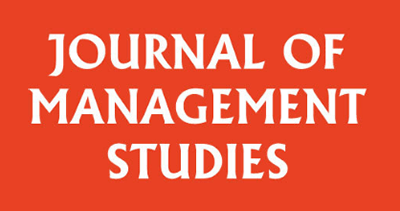
Summary
When do new CEOs lead with a bang? CEOs may act boldly to clarify their strategic intentions during early tenure, yet, they may also avoid such moves because of early knowledge gaps. Our research investigates the timing of first mergers and acquisitions (M&As) by newly appointed CEOs. In our paper published in the Journal of Management Studies, we find that CEOs facing more uncertainty—outsiders or those whose appointments are received with more negative market reactions—are more likely to engage in early, bold M&A moves. However, timing depends: some bold actions emerge later, as CEOs gain knowledge.
Why the First Move Matters
The appointment of new CEOs often marks the beginning of a new strategic chapter in the firm—but for many stakeholders, it also opens a period of uncertainty. What direction will new CEOs take? How bold will they be? Can they deliver results?
These questions are particularly pressing when the new CEO is an outsider or when their appointment is met with skepticism by the market. In such cases, the firm’s strategic direction appears especially uncertain, intensifying scrutiny from different stakeholders.
One way in which CEOs can reveal their strategic intentions is through their first major strategic move—indeed few moves are more visible, risky, and consequential than a merger or acquisition (M&A). M&As require substantial commitment and draw public attention. That makes them powerful indicators of a CEO’s vision, values, and appetite for risk.
So, when do new CEOs “go bold”? And does it depend on how uncertain or scrutinized their arrival was?
Two Theories, One Puzzle
We built our research around two well-established – yet apparently contradictory – perspectives:
The Stakeholder Uncertainty View suggests that new CEOs may act boldly early on to reduce uncertainty and reassure stakeholders. Bold moves like M&As can clarify a CEO’s strategic intentions.
In contrast, the CEO Life Cycle View proposes that new CEOs need time to learn about the firm and understand internal processes before taking big strategic decisions. According to this view, boldness may come later—not right away.
These theories offer competing predictions. To reconcile them, we examined when new CEOs are likely to announce their first M&A—especially under conditions of uncertainty.
What We Studied
We analyzed a sample of 873 newly appointed CEOs of U.S. publicly listed firms between 2004 and 2020. Using event history analysis, we modeled the hazard—that is, the instantaneous risk—of a first M&A announcement at any given point during a CEO’s first three years.
We paid particular attention to two types of CEOs under strategic uncertainty:
1. Outsider CEOs – those who joined from outside the firm.
2. CEOs with negatively received appointments – measured by decreases in the firm’s stock price following the appointment.
We also looked specifically at bolder M&As—deals that were either large (over $100 million) or cross-border, as these are typically riskier, more complex, and more visible than smaller or domestic deals.
What we Found
Our results showed that new CEOs facing more uncertainty are more likely to act boldly. Outsider CEOs and those with more negatively received appointments were more at risk of announcing their first M&A early in their tenure.
Insiders versus outsiders
But we found that timing depends on the type of CEOs and the boldness of the deal.
When outsiders are appointed CEOs, all eyes are on them. Our research found that some outsider CEOs do wait—but not for long. By their second year, they are significantly more likely than insiders to make bold moves, especially large acquisitions. By the third year of tenure, the likelihood of an outsider CEO announcing a large acquisition is almost 270% higher than that of an insider.
Negative versus positive market reactions
We also examined newly appointed CEOs whose arrival sends the firm’s stock price tumbling. From day one, they face not only the challenge of learning a new organization but also the burden of investor skepticism. In our study, we found that such CEOs often respond with boldness. Those whose appointments were met with a typical dip in market reactions were 14.4% more likely to announce an acquisition early in their tenure than those with more positively received appointments.
Bolder deals: large and cross-border deals
Large and cross-border deals stand out for their visibility, complexity, and risk.
In our study large M&As showed stronger time dependence. New CEOs were more likely to delay large acquisitions compared to smaller ones—supporting the idea that bolder moves require more internal knowledge.
Cross-border M&As are a different story. These bold moves were more likely to occur earlier and showed less time dependence. This suggests that such deals may serve as effective early indicators of strategic intentions.
We found that outsider CEOs became significantly bolder over time: by the third year of their tenure, they were 346% more likely than insider CEOs to announce a large acquisition. Similarly, CEOs whose appointments were met with a typical dip in market reactions were 64% more likely to pursue large deals by the end of year three.
Why This Matters for Boards, Investors, and Beyond
Our findings offer useful insights for various stakeholders navigating CEO transitions:
Boards of directors: If you want a new CEO to make early bold moves—particularly to clarify strategic intentions—consider what support structures can speed up their learning. Onboarding, coaching, and internal information-sharing processes may help accelerate action.
Investors and analysts: Observing when a CEO makes their first M&A (or doesn’t) can provide cues about their strategy. Delays might not indicate caution or indecision, but rather thoughtful preparation.
Executives: For new CEOs themselves, understanding the dual pressures of stakeholder expectations and internal learning is key. The decision to act boldly—or wait—must balance the needs for boldly communicating strategic intentions with internal readiness.
What Comes Next?
We focused on the first M&A because it sets the tone of a new CEO’s strategic intentions. But the absence of early action can also be revealing. A CEO who delays bold moves too long might lose momentum or struggle to shift perceptions later on.
Our findings open several avenues for future research. What about other types of early strategic decisions, like divestitures or alliances? How do stakeholders interpret inaction? And what conditions accelerate or constrain boldness beyond the CEO’s personal characteristics?
As leadership transitions continue to draw intense attention, understanding how timing, uncertainty, and boldness interact will be crucial—not just for scholars, but for anyone invested in the future of an organization.

0 Comments